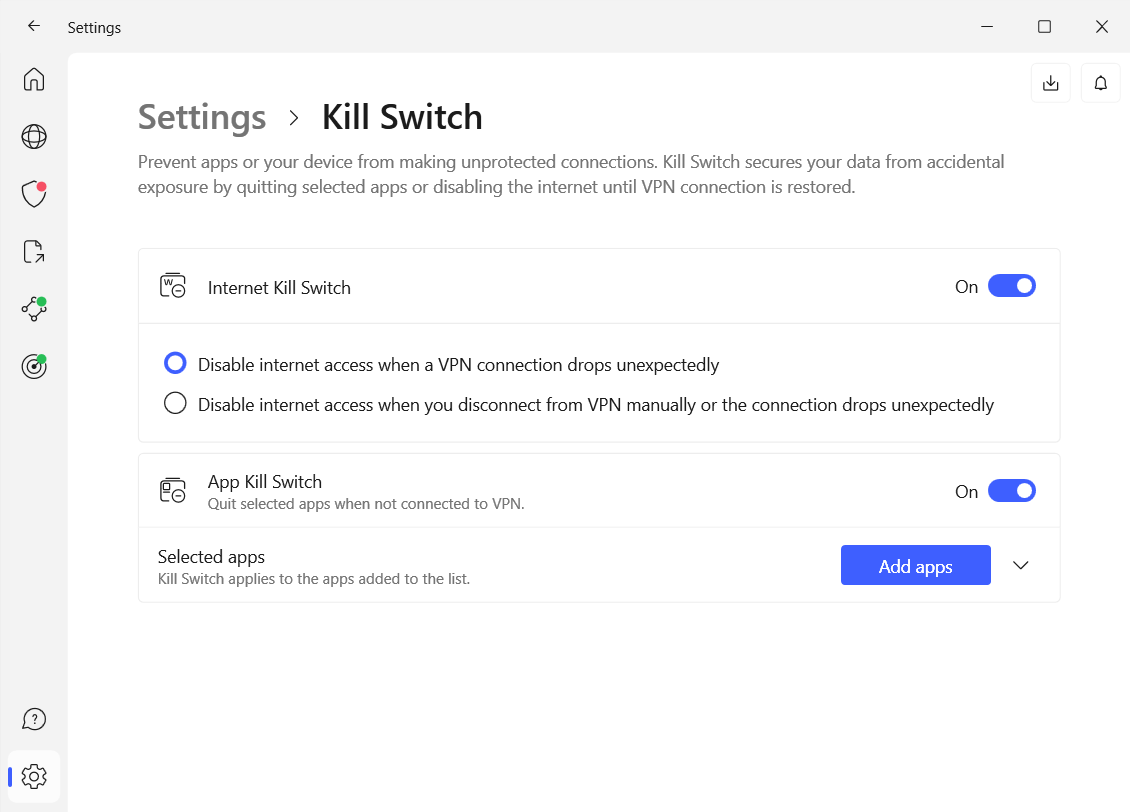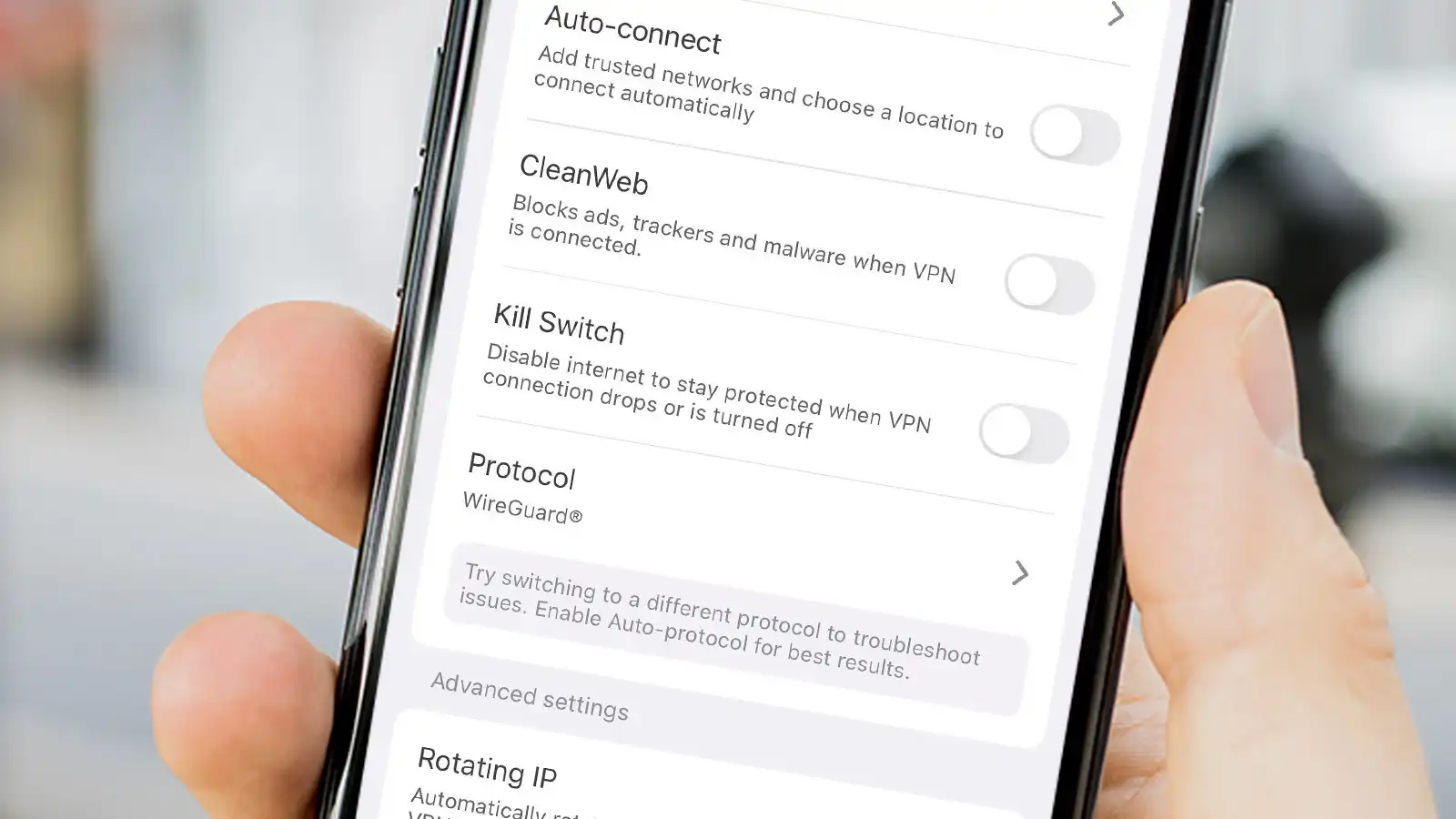Make sure your identity is never compromised with a VPN’s kill switch.
If you use a VPN, you’ve likely come across the kill-switch feature. But you may not know what it actually does or why you’d want to use it.
A VPN’s kill switch is one of the first features I recommend people enable with their VPN and something I always have on whenever I connect. It’s a simple, fail-safe way to guarantee your data is never accidentally exposed if your VPN disconnects. It’s so important that a service must include a robust and trustworthy kill switch in order to make it onto my list of best VPNs.
Below I’ll explain what a kill switch is, why I think you should always utilize this feature, and how to use it with your VPN.
What is a VPN kill switch?
A VPN kill switch is a fail-safe for your secure, private connection. If your VPN disconnects for some unexpected reason, the kill switch will immediately engage and block access to the internet, thus keeping your personal information from being revealed by mistake.
Some services offer both an internet kill switch as well as an app-based kill switch. An app-based kill switch only blocks certain apps from accessing the internet in the event of a VPN disconnection rather than blocking the entire internet connection.
Why does a kill switch matter with a VPN?
A VPN’s kill switch is like a safety net for your private encrypted connection. It makes sure that if you accidentally disconnect or the VPN stops working, your connection will still stay private and secure.
This is crucial for almost any activity you’re likely to use a VPN for. Anonymity and privacy are critical for at-risk users or those handling sensitive information such as lawyers, dissidents, and whistleblowers. For these types of individuals, a VPN may be the only way they stay safe using the internet and a kill switch is a reliable backup measure to ensure their identity remains hidden.
Even just casual VPN users who want to watch Netflix can benefit from a kill switch. By using a VPN to circumvent geo-blocked content you’re able to freely watch all of your shows. But if your connection unexpectedly drops, you may suddenly find yourself blocked from that same content. A kill switch can reliably keep your true home IP address location hidden so that when you reconnect, you can pick up right where you left off.
A kill switch is one of the most important security features a VPN can have. Almost every VPN comes with one and if yours doesn’t, it’s probably best to switch providers asap.
How to turn on a VPN kill switch

Sam Singleton
Most VPNs have a kill-switch feature and it’s almost always found under the app’s Settings menu. Once you open up the Settings menu, locate the kill-switch feature button, and toggle it to “On.” That’s it, you’re good to go and browse safely with your fail-safe enabled.
Alternatively, if offered by your VPN, you can toggle on the app-based kill-switch feature as well. Here you’ll need to do a little more legwork by individually adding each app you wish to use the kill switch with.
One thing to note though, is that if you have the main overall kill switch enabled at the same time as your app-based kill switch, the overall version will still cut off access to your entire internet rather than just the apps you designated in the event of a disconnection.



